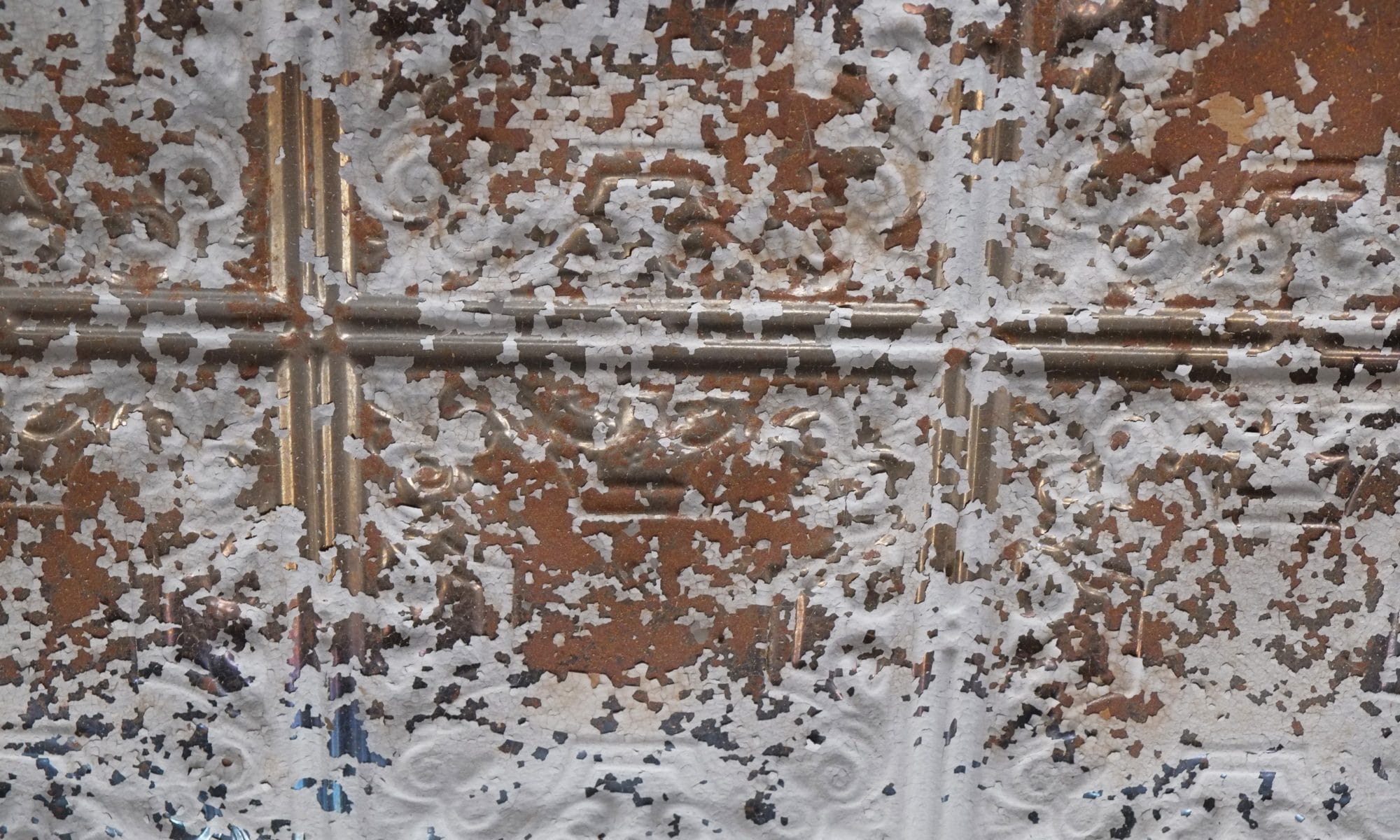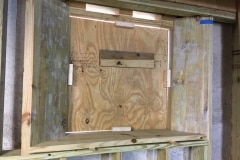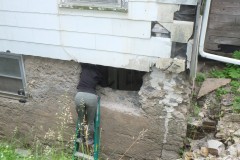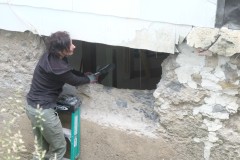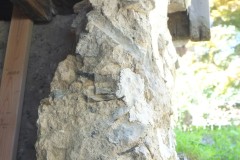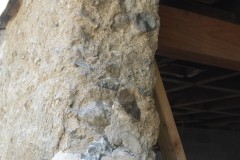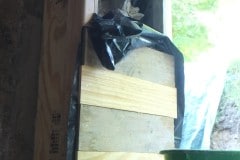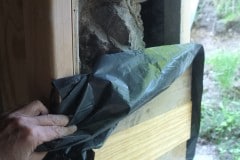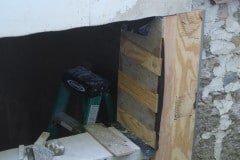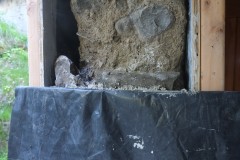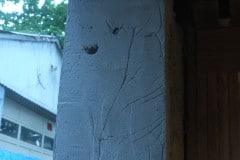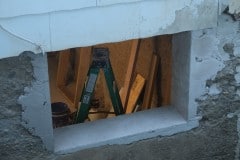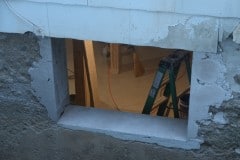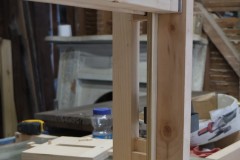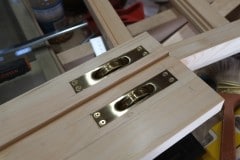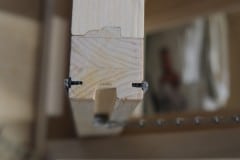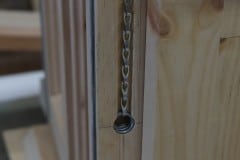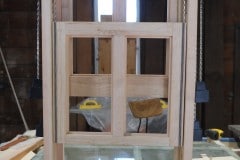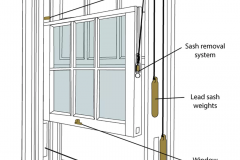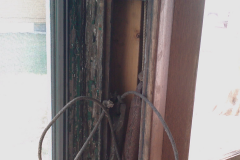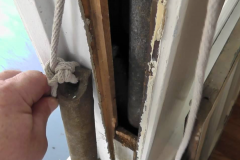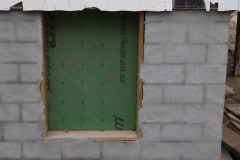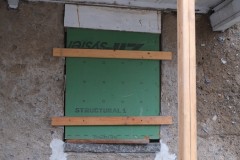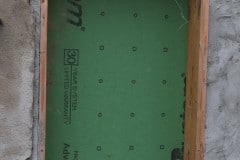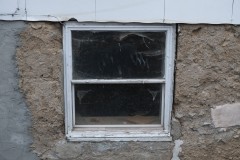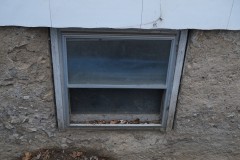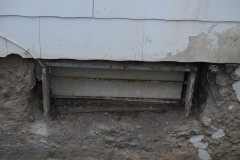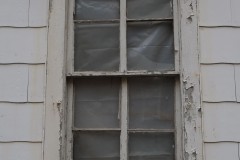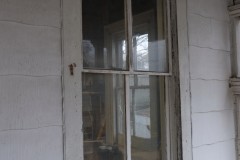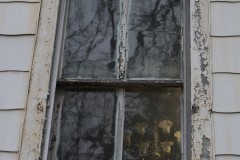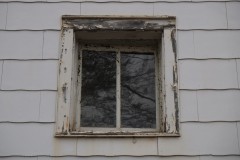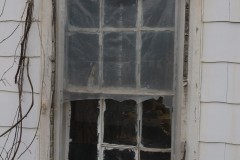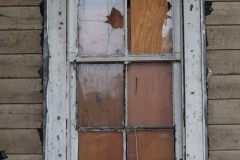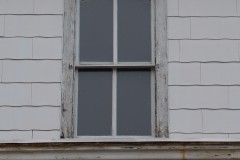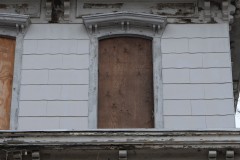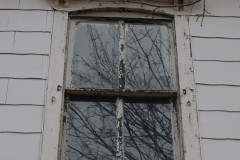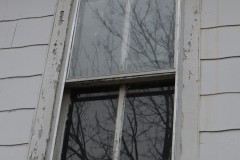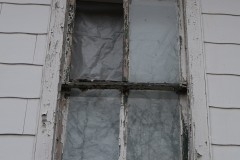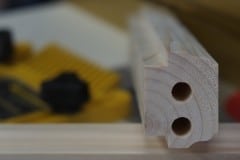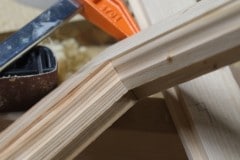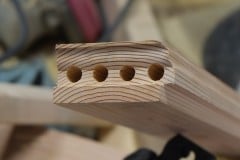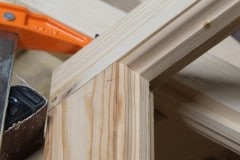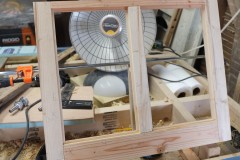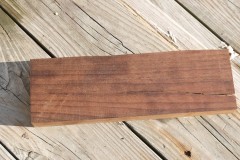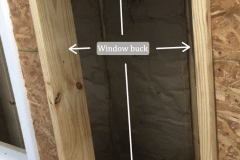For a while I’ve been trying to figure out how to transition the window frames, which will be set within the walls, to the inside of the framing, a distance which varies throughout the ground floor of between 6″ to 9″. I spoke with Don the Johnson and he thought of building this into the window frames and then just slotting them in, interesting idea and one which eventually led me to extending the window bucks out with 2×12″ pressure treated wood. I know it sounds confusing, but it makes sense when you see the pictures.
We sanded the wood and filled any defect with epoxy putty as this pressure treated wood will eventually be a finished painted surface. You’ll notice that we decided to add a 45° angle to this so it will allow a bit more light in and improves the outside views from within. Like most things at DM nothing is straight forward, not much is square, parallel or level so making the beveled parts took quite a while. With one of these almost complete I’m thinking that the making of the actual sash windows will be pretty straight forward as they will be square. Looking forward to when I have one complete sash window under my belt.
The deep window sills will be great for house plants, glad we have them. By the way technically the window sill is the sloping part at the bottom of the window on the exterior side and what I’m referring to as the window sill is the the stool, but how many people know what a window stool is?
Despite common belief, the window sill is found on the outside of the home. Inside the home, the part of the window often called the “sill” is actually the stool. However, the stool is often described as the sill, even by window experts. As a result, it can be hard to tell which part of the window a person is referring to when the sill is being discussed.https://www.championwindow.com
